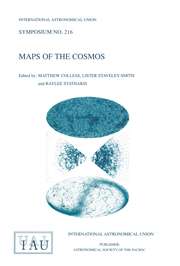No CrossRef data available.
Article contents
Models of the Solar Photosphere
Published online by Cambridge University Press: 08 February 2017
Abstract
This review summarizes the main properties of the available theoretical models of the solar photosphere and the semiempirical models based primarily on observed spectra in different wavelength regions. LTE and non-LTE semiempirical models are compared with LTE and non-LTE theoretical (radiative equilibrium) models calculated with and without convective energy transport. Atomic and molecular lines throughout the spectrum affect the model calculations in essential ways. The temperature-minimum region, considered as the upper boundary of the photosphere, is discussed in detail, in view of the substantial non-radiative cooling in this region. Results are shown to illustrate the relationship between average one-dimensional models and Nordlund's three-dimensional convection models.
Information
- Type
- I. Global Properties of the Photosphere
- Information
- Copyright
- Copyright © Kluwer 1990

